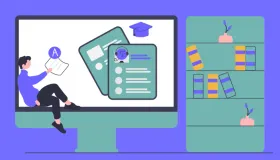Motivating Drives Reading Passage
Looking to register for IELTS? Check out the upcoming dates!
Motivating Drives Reading Passage
Paragraph A
Analysts have been investigating ways to get workers motivated for many years. This investigation is a comparative study that builds a basic and extensive model for the study. This is mostly true when the business goal is to turn apathetic teams into beneficial ones. But their researchers have restrictions. It is like studying the movements of a car without pulling the engine.
Motivation is what helps people to triumph and plays a significant role in improving bureaucratic development. It is important to study the motivation of workers because it is connected to the emotions and attitudes of workers. Recent surveys show there are four drives for motivation. They are the drive to acquire, the drive to bond, the drive to comprehend and the drive to defend.
Paragraph B
The Drive to Acquire
The drive to acquire must be met to advance the obtain aspect also the attainment element. Thus the way that excellent act is acknowledged, the types of perks that are offered to polish the career path. But sometimes a written letter of valuing causes more motivation than a thousand dollar check, which can serve as the unnoticed power to uplift business commitment. Victorious firms and leaders not only need to focus on the boost of physical reward but also on moving other levers within the firm that can drive motivation.
Paragraph C
The Drive to Bond
The drive to bond is also the key to driving motivation. There are different types of bonds among people, like friendship and family. In an organisation, workers also want to be a crucial part of a company. They want to be owned by the company. Workers will be motivated if they find personal intimacy in the company. Meanwhile, the worker will be most committed on the condition that the force of motivation within the worker impacts the direction, strength, and perseverance of decision-making and behaviour in the company.
Paragraph D
The Drive to Comprehend
The drive to comprehend motivates many workers to act higher. For years, it has been known that setting extended goals can greatly cause a collision act. Firms need to make sure that the different job roles provide workers with simulations that dare them or allow them to grow. Workers don’t want to do unintelligible things or tedious work. If the job doesn't provide them with personal meaning and attainment, they will leave the company.
Paragraph E
The Drive to Defend
The run to protect is frequently the tough lever to pull. This run apparent itself as a hunt to create and encourage justice, fairness, and the capability to convey ourselves freely. The bureaucratic level for this basic human instigator is resource allotment. This run is also met through a worker feeling connected to a company. If their companies are combined with another, they will show worries.
Paragraph F
Two surveys have been done to find the connection between the four drives and motivation. The article based on two surveys was at last published in Harvard Business Review. Most author’s quarrels have laid prominence on the four-drive theory and real exploration. Using the results of the studies that were conducted with workers from Fortune 500 companies and two other global businesses(P company and H company), the article notices how individualistic drives affect workers’ behaviour and how bureaucratic levers improve worker motivation.
Paragraph G
The studies show that the drive to bond is most connected to satisfying commitment, while the drive to understand is most related to how much effort employees spend on work. The run to obtain can be fulfilled by a reward system which rewards effort to act and gives the best people a chance for development. For a drive to protect, a study on the combination of P company and H company shows that workers in the former company show an abnormal collaborating attitude.
Paragraph H
The key to strongly prompting employees is to meet all drives. Each of these drives is main if we are to comprehend employee incentives. These four drives, while not certainly the only human drives, are the ones that are central to united understanding of modern human life.






